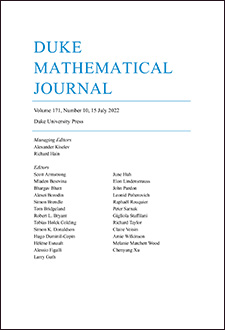Abstract
The cutoff phenomenon describes a sharp transition in the convergence of a family of ergodic finite Markov chains to equilibrium. Many natural families of chains are believed to exhibit cutoff, and yet establishing this fact is often extremely challenging. An important such family of chains is the random walk on , a random -regular graph on vertices. It is well known that almost every such graph for is an expander, and even essentially Ramanujan, implying a mixing time of . According to a conjecture of Peres, the simple random walk on for such should then exhibit cutoff with high probability (whp). As a special case of this, Durrett conjectured that the mixing time of the lazy random walk on a random -regular graph is whp . In this work we confirm the above conjectures and establish cutoff in total-variation, its location, and its optimal window, both for simple and for non-backtracking random walks on . Namely, for any fixed , the simple random walk on whp has cutoff at with window order . Surprisingly, the non-backtracking random walk on whp has cutoff already at with constant window order. We further extend these results to for any that grows with (beyond which the mixing time is ), where we establish concentration of the mixing time on one of two consecutive integers
Citation
Eyal Lubetzky. Allan Sly. "Cutoff phenomena for random walks on random regular graphs." Duke Math. J. 153 (3) 475 - 510, 15 June 2010. https://doi.org/10.1215/00127094-2010-029
Information





